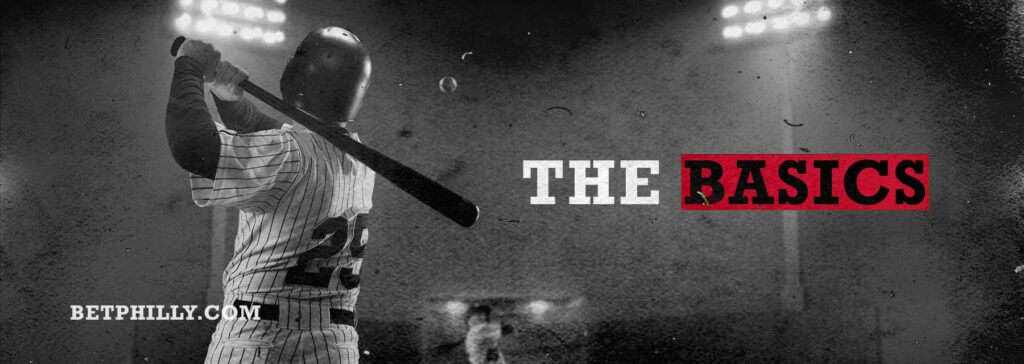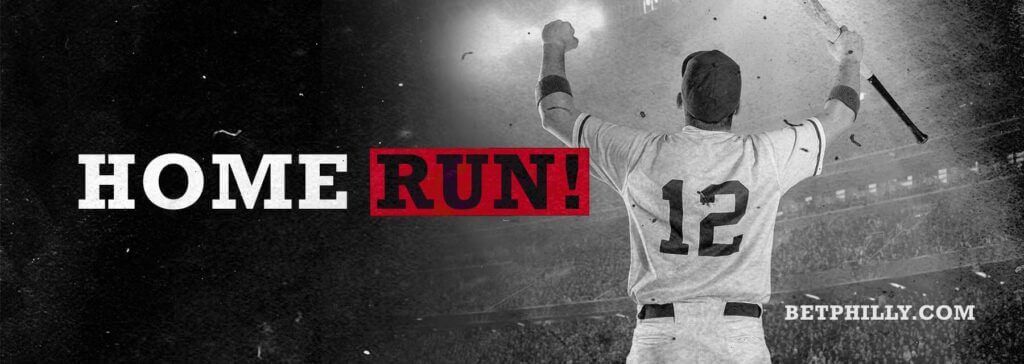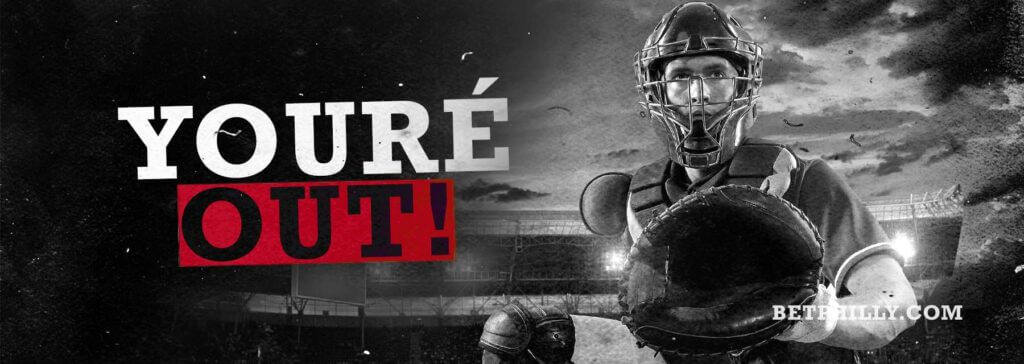Become a Baseball Betting Expert
Baseball has witnessed many changes since it started in 1876. It has been a long time since those early days, but new MLB rules are still being introduced.
If you need to scrub up on the latest rules or you are new to the game and want to learn the basics, BetPhilly is the right place.
Scroll down and let our experts fill you in on all the details, from gameplay details to MLB playoff rules.
For those needing an update on how MLB odds work, we have a detailed guide on exactly that right here. And if you are looking for the best Betting Sites in PA, we have a full guide for that too.
For now, let’s talk about these all-important MLB rules!
Basic MLB Rules
Baseball is a game where two teams of nine players each compete over the course of nine innings to see who can score the most runs. To score, a player must touch the home plate after completing a full circuit of the bases. A player can get on the base in two ways: with a hit or by drawing a walk. Key factors such as fair balls, strikes, and outs are all decided by the umpires.

Of course, there is more to the game than this, so let’s break down all the details and explain any new MLB rules to help you understand what to expect.
Game Objective
Every MLB team aims to score more runs than its opponent, which is the main objective of any baseball game, regardless of any new MLB rules coming into play. This key objective will always be the same. Runs are scored every time a runner reaches all three bases and then the home plate. There are several ways in which this can be done:
- Runners advance one base at a time through multiple hits from the team
- Batters hit doubles and triples and runners in front pick up runs
- A home run is hit and all runners on the bases score a run
Playing Field
The entire field is shaped like an ice cream cone, which is split into two areas, the infield and the outfield. Here is a quick explanation of the two areas:
Infield
The infield is often described as a diamond, although it is actually a square shape. Most of the area is made up of dirt and takes up six of the nine positions of the team. This includes the shortstop, first, second, and third bases, pitcher, and catcher.
Outfield
The outfield is the rest of the baseball field, from the infield to the boundary outfield wall. This is all grass and takes up the remaining three positions of the team, the left and right fielders and the main center fielder in between.
Player Roles
Like other popular US sports, baseball includes key positions that can make or break a team. The pitcher is often described as the pivotal player that can force mistakes into the opposition, but it’s still very much a team game.
- Pitcher – the pitcher has the role of throwing the ball to the batter within the strike zone.
- Catcher – the catcher aims to catch the pitcher’s ball and passes tactics to the pitcher.
- Infielders – infielders try to throw batters out, stop ground balls, and catch pop-ups.
- Outfielders – outfielders try to catch and return balls to infielders as quickly as possible.
MLB Rules & Scoring
We mentioned earlier that baseball scoring is all about reaching the home plate successfully, which equates to scoring one run. The MLB rules detail several factors affecting the batters and runners as they bat and run around the bases.

Strikes
There are three ways to account for strikes:
- The pitcher throws into the strike zone and the batter does not make contact.
- The batter swings but misses the ball the pitcher threw – regardless of the striking zone.
- The batter swings and hits a foul ball.
Each batter aims to reach the first base before earning a strikeout (three strikes).
Balls
The MLB rules show that all pitches not meeting the above strike conditions are fair balls. Whenever a pitcher fails to strike out a hitter after throwing four balls, the batter is given a free pass to first base. It’s the home plate umpire’s job to decide what is and is not a fair ball.
Hits
A base hit is when the batter knocks a ball safely into play. Hits can be explained in four ways:
- Single – The batter gets on base with a single.
- Double – The batter makes it around first and then second for a double.
- Triple – When a batter completes a triple, they advance three bases without being out.
- Home Run – The batter hits a ball over the wall or runs around all the bases and scores.
Out
An out is called when a hitter fails to reach a base safely during his batting turn. The occurrence of this might take several forms:
- A strikeout (three strikes).
- Grounding out (batter does not reach first base).
- Lining out/flying out (a hit ball is caught).
MLB Rules – Teams & Players
Each MLB team has a total of 40 players on its roster. A minimum of 25 players must make up each team’s 26-man active roster.
This usually includes 13–14 position players, while the remaining spots are filled by pitchers (both starting and bullpen). How the different teams fully distribute their 25 roster places is up to them.
After each year’s Spring Training, the MLB rules require teams to finalize their full 40-man rosters. The remaining players can be sent to Minor League teams to help with injuries or other game-related circumstances.
The roster size increases through the season, rising to a 28-player active roster or 29-player for any doubleheaders in the final month.
Coach & MLB Challenge Rules
MLB challenge rules are always hot topics of debate. Teams receive two manager challenges to begin most games, such as All-Star Games, some playoff games, and any Wild Card tie games or Divisional games. All other games come with one manager challenge.
MLB Rules – Game Duration & Time Limits
MLB rules have no set time limit for the duration of one game. The average game lasts around three hours, with extra innings to determine the winner if required.
New rules continue to get introduced to help improve gameplay, and we highlight those further below. Now, we shall explain the key facts on how a full game of MLB and MLB playoff games are played.
Overtime Rules
MLB rules show that if the score is tied after nine innings, the game goes into extra innings. The side with the lead at the end of each extra inning (both halves) is declared the winner.
If the game remains tied following an extra inning, more extra innings are played until a winner is chosen. The home team wins if they score the winning go-ahead run in extra innings.
MLB Playoff Rules
The same rules follow through to the playoff fixtures, so again, a winner will always be decided through the extra innings format. We highlight other key MLB playoff rules later on.

Fouls, Penalties & Violations
Various fouls, penalties, and violations often result in outs, runners earning a base, and, at the most extreme, players being ejected from the field. The MLB rules put the task of calling these fouls on players and coaches into the hands of the umpires. Common fouls include:
- Obstruction (tampering with bats and balls)
- Interference (players, coaches, crowd)
- Charging the mound (aggressive actions)
- Unsportsmanlike behavior (physical, complaining)
New MLB Rules on Equipment
Baseball requires more equipment than most other US sports. Here, we have listed the key pieces of equipment set out by the official MLB rules:
- Baseball bats
- Helmets
- Fielding gloves
- Catcher gloves
- Footwear
- Protective gear
- Mouthguards
Umpires & Procedures
Some of the key MLB rules, such as strikes and ball calls, are made by the home plate umpire. This umpire has an excellent view of the home plate as they are stationed immediately behind the catcher. This umpire is also responsible for monitoring tight plays at the plate.
Two other umpires play an important part in ensuring a fair game. These officials stand at the right and left field foul lines, deciding if any batted balls are fair or not. They are also in charge of determining whether or not a player is safe or out at their relevant bases.
New MLB Rules For Trading Players
The latest MLB rules allow all trading of players up until August before the season starts. Traditionally, the cut-off was always 31st July, but this has changed in recent years. Nowadays, you can expect the deadline day to be around the end of July and the start of August.
New Changes in MLB Rules
The MLB rules authority has been making changes throughout the league’s history. Some changes have been more influential than others, such as all MLB batters were required to wear helmets from 1971 onwards and the safety-inspired “Chase Utley Rule” in 2016.
New MLB rules include timers to increase the pace of play, defensive shape to improve the average of balls in play, and bigger bases from 15 to 18 inches are now to be used (however, the MLB rules indicate the home plate is to remain the same size).
There have also been some recent changes to the MLB playoff rules in recent years. It is still a knockout-style event, but it now welcomes a total of 12 teams instead of the previous 10, providing space for more teams to try and gain their position in the postseason fixtures.
